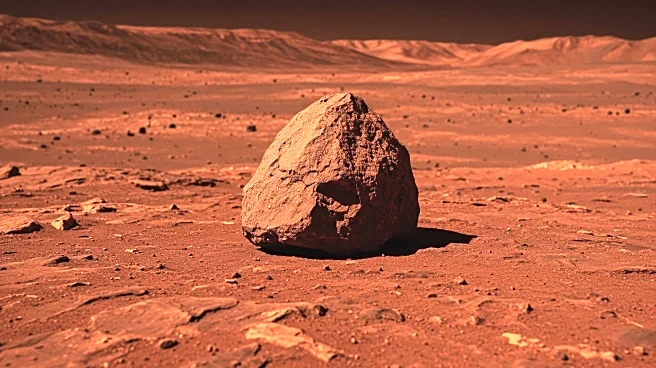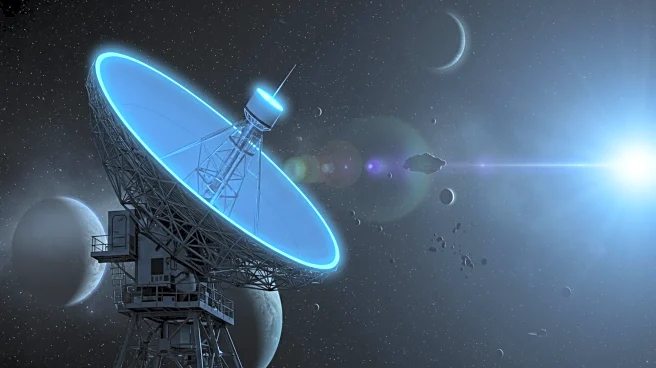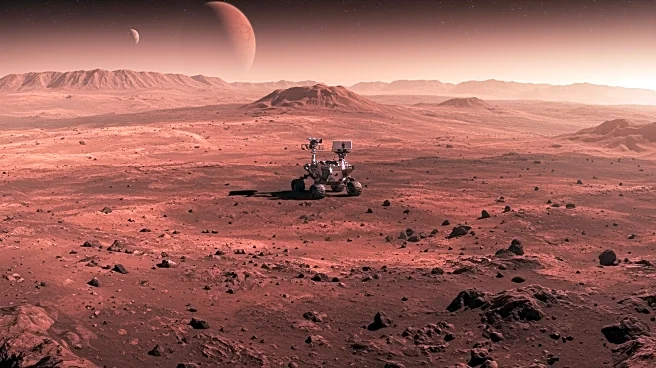What's Happening?
NASA's Perseverance Rover has captured images of a rock on Mars that resembles a helmet, leading to speculation about its origins. While some have humorously suggested it could be an alien artifact, experts have clarified that the formation is a natural rock shaped by geological processes. The rover's mission includes evaluating the feasibility of human exploration on Mars, with its camera and sampling systems aiding in detailed mapping and analysis of the Martian surface. This discovery highlights the public's engagement with space exploration and the scientific endeavors involved.
Why It's Important?
The helmet-shaped rock on Mars has captured public interest, illustrating the power of pareidolia—the human tendency to see familiar shapes in random objects. This phenomenon highlights the importance of scientific literacy and skepticism in interpreting space exploration findings. The Perseverance Rover's mission is crucial for advancing our understanding of Mars, potentially paving the way for future crewed missions. The rover's discoveries contribute to the broader goals of space exploration, including resource utilization and the search for signs of past life on Mars.
What's Next?
NASA will continue to analyze the Martian surface, with the Perseverance Rover playing a key role in gathering data for future missions. The rover's findings may inform strategies for human exploration and resource extraction on Mars. Public interest in space exploration is likely to remain high, with ongoing discussions about the potential for life on Mars and the technological advancements required for crewed missions.
Beyond the Headlines
The public's fascination with the helmet-shaped rock underscores the cultural impact of space exploration, where scientific discoveries often intersect with popular imagination. This case highlights the importance of effective science communication in fostering public understanding and support for space missions.











